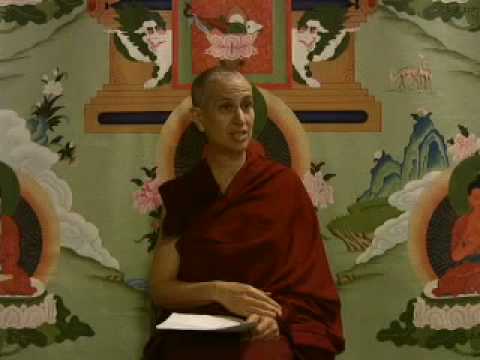Verse 24-2: Marks of a buddha
Part of a series of talks on the 41 Prayers to Cultivate Bodhicitta from the Avatamsaka Sutra (the Flower Ornament Sutra).
- Meaning of wearing ornaments
- Origins of the marks of a buddha
- Significance of the marks
- Overview of selected marks
41 Prayers to cultivate bodhicitta: Verse 24-2 (download)
We were on Verse 24:
“May all beings attain the ornaments of the major and minor marks of a Buddha.”
This is the prayer of the bodhisattva when seeing someone wearing ornaments.
I’ve commented that lots of time, in a worldly way, we wear ornaments to attract attention to ourselves, and we wear ornaments because we don’t feel like we’re attractive enough. It could come out of low self-esteem: “I’m not good enough so I’ve got to wear ornaments to make myself look better.” It could come out of social pressure: “Everybody else is wearing ornaments and what are they going to think of me if I don’t have this jewelry.” It could come from a number of different worldly kinds of minds.
In Buddhism when we see the deities wearing ornaments it’s not from these kinds of minds, because from the point of view of a buddha they don’t have low self-esteem. They don’t worry about that kind of thing. They don’t worry about how they look and want to please people, but instead the ornaments symbolize the six far-reaching practices that adorn them. Think of your mind being adorned by these six far-reaching practices, that’s what the symbolism is.
We had finished that one already. We were on the major and minor marks.
May all beings attain the ornaments of the major and minor marks of a buddha.
The major and minor marks. Sometimes it’s also translated as the “signs and marks of a buddha.” These are 32 signs and 80 marks of a fully enlightened one, and they’re described in the Abhidharma…? (Not sure, but they’re certainly mentioned in the sutras.) They actually come from pre-Buddhist culture, because in the ancient Indian culture they had the idea that people who had high realizations had signs that could also be seen physically. They had special physical signs. This kind of belief got adopted into Buddhism, so the Buddha too was said to have these 32 signs and 80 marks.
Some of them we see when we look at the Buddha. The crown protrusion is one (the ushnisha). Each of them is described as having a particular cause. In other words, something that the Buddha practiced for many eons on the path of a bodhisattva enabled him to get these particular signs. You have the ushnisha—whenever we see the picture or the statute of the Buddha with the ushnisha it’s not because somebody clunked him on his head and he has a lump on his head. Many people ask that: “Why does the Buddha have a lump on his head?”
It’s also why the Buddha, if you look at the statues, has blue hair. Actually the Buddha was a monastic—he shaved his head—but in the statues he’s shown as having blue hair, each one coiled (I think clockwise), each hair coiled individually. This is because that is one of the signs and marks of a fully enlightened one. It’s not that the Buddha, when he was alive, had blue hair and he grew his hair long and everybody else cut it short. This is kind of putting the culture into the Buddha and attributing different Buddhist meanings to it.
The curl in the center of his (forehead) that we often see—that in the deities got transformed into a third eye—that also is a hair that can go out as far as the end of the universe and radiate light, and so on, and that’s one of the marks.
On the Buddha very often you see Dharma wheels in the palms of his hands and soles of his feet. That’s one of the marks. Broad shoulders. His hands are very long. There are all these different things that the Buddha has. The number of his teeth, the arrangement of his teeth. These kinds of things are said to be the marks and signs of a fully enlightened one that, like I said, were taken from ancient Indian culture and given Buddhist meaning.
It’s quite interesting to read in the scriptures the specific cause that the Buddha created to attain each one of these because it again reminds us of causes that we too need to practice. Specific kinds of generosity, specific kinds of acts of kindness. It reminds us of those that we can engage in them too.
Venerable Thubten Chodron
Venerable Chodron emphasizes the practical application of Buddha’s teachings in our daily lives and is especially skilled at explaining them in ways easily understood and practiced by Westerners. She is well known for her warm, humorous, and lucid teachings. She was ordained as a Buddhist nun in 1977 by Kyabje Ling Rinpoche in Dharamsala, India, and in 1986 she received bhikshuni (full) ordination in Taiwan. Read her full bio.


